

Wismar
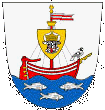
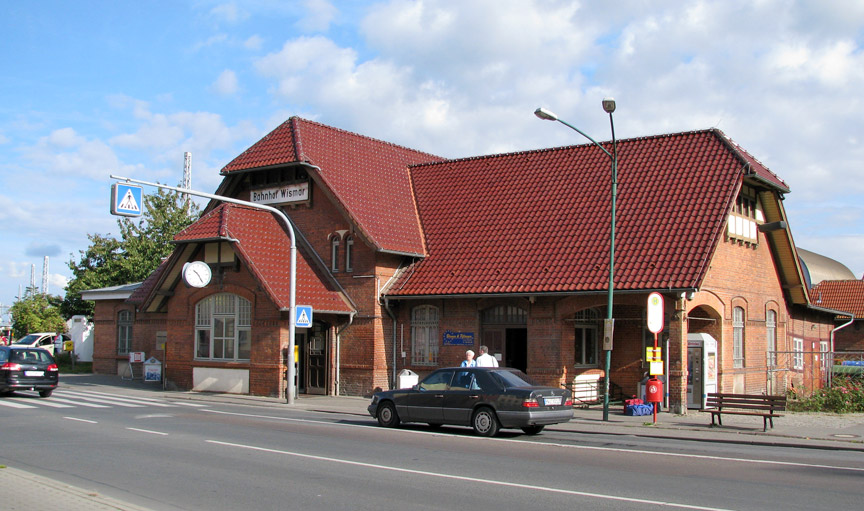
train station
Wismar is a small port and Hanseatic League town in northern Germany on the Baltic Sea, in the state of Mecklenburg-Vorpommern, about 45 km due east of Lübeck, and 30 km due north of Schwerin. Its natural harbor, located in the Bay of Wismar is well-protected by a promontory. The population was 45,414 in March 2005, more than doubled from 21,902 in 1905.

Representative of Hanseatic League city brick construction as well as the German brick churches, the city has been included in the UNESCO list of World Heritage Sites since 2002.
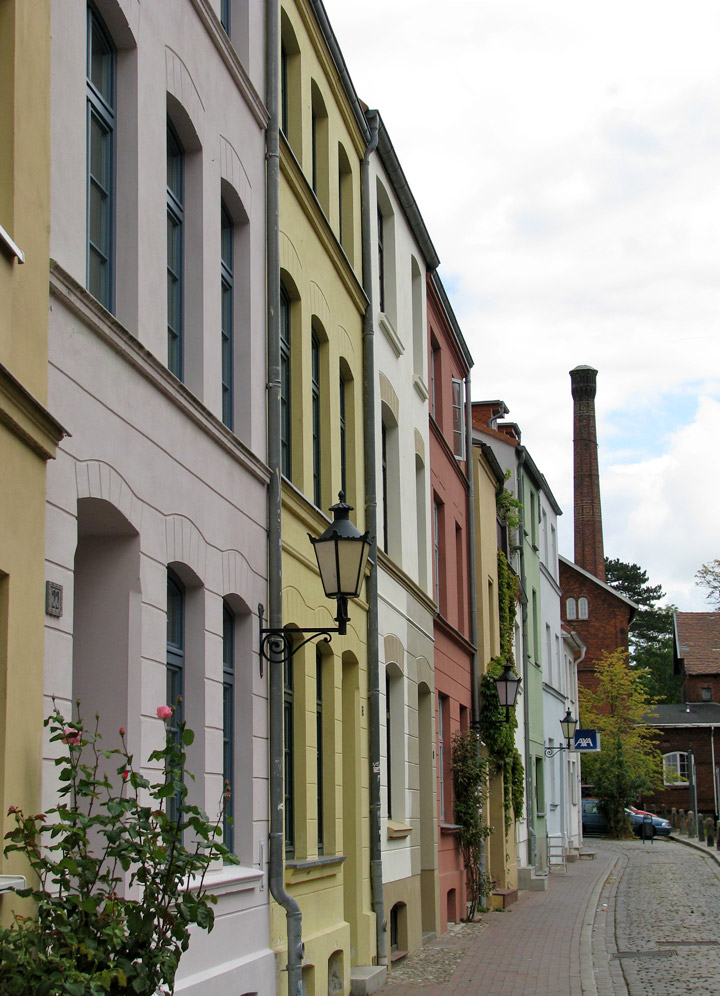
The town was the setting of the 1922 vampire movie Nosferatu (in the film
however, the town is named "Wisborg").
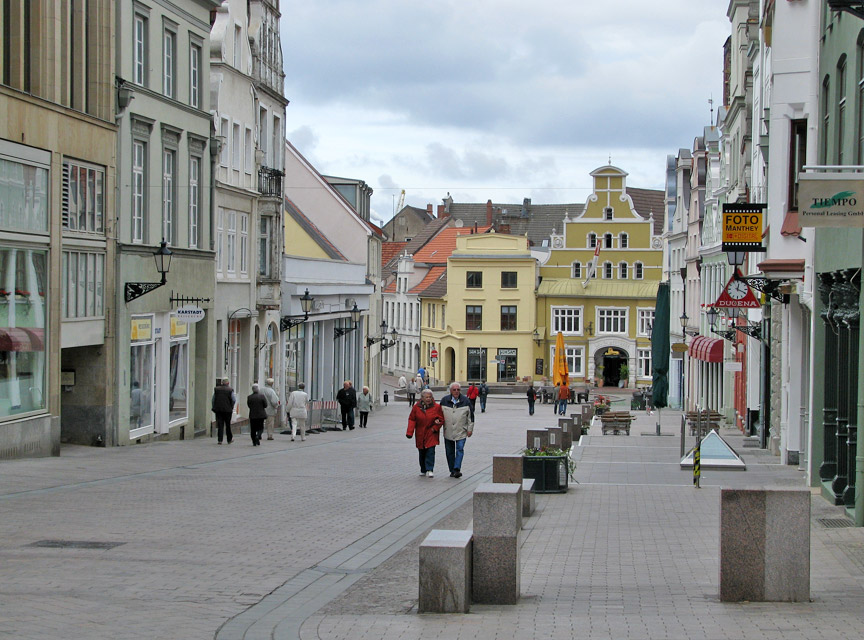
Wismar is said to have received civic rights in 1229, and came into the
possession of Mecklenburg in 1301. In 1259 it had entered a pact with Lübeck and
Rostock, intended to defend against the numerous Baltic sea pirates, which
developed into the Hanseatic League. During the 13th and 14th centuries it was a
flourishing Hanseatic town, with important woollen factories. Though a plague
carried off 10,000 of the inhabitants in 1376, the town seems to have remained
tolerably prosperous until the 16th century.
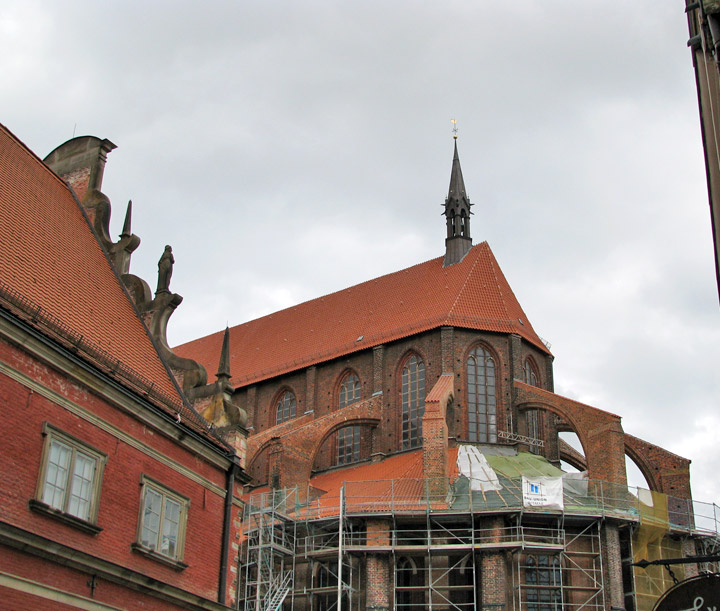


By the Peace of Westphalia in 1648 Wismar passed to Sweden, with a lordship to
which it gives its name. Through Wismar and the other dominions in the Holy
Roman Empire, the Swedish monarchs in their roles as princes, or Reichsfürsten,
took part in the Imperial Diets. From 1653 it was the seat of the highest court
for that part of Sweden. In 1803 Sweden pledged both town and lordship to
Mecklenburg for 1,258,000 Riksdaler, reserving, however, the right of redemption
after 100 years. In view of this contingent right of Sweden, Wismar was not
represented in the diet of Mecklenburg until 1897. In 1903 Sweden finally
renounced its claims. Wismar still retains a few relics of its old liberties,
including the right to fly its own flag.
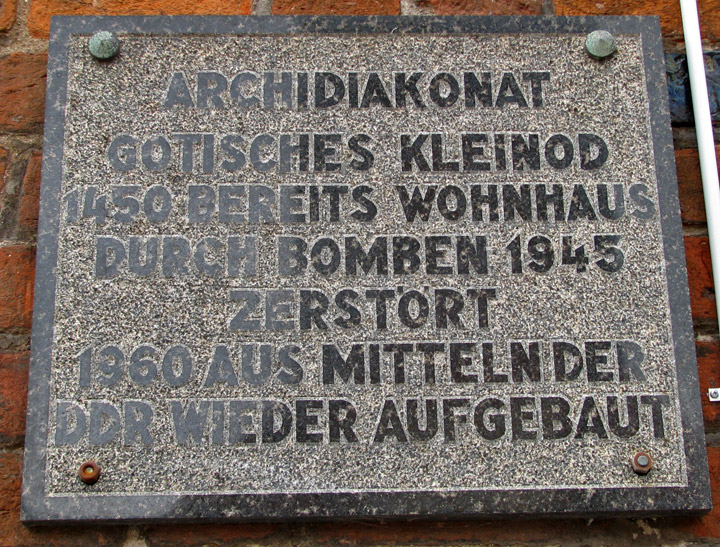
the Norddeutsche Dornier-Werke
aviation plant in the town
provoked much bombing during WW II
At the turn of the 19th century the most important manufactures of Wismar were in iron, machinery, paper, roofing-felt and asphalt. There was also a considerable trade, especially by sea, with exports including grain, oil-seeds and butter, and the imports coal, timber and iron. The harbour was deep enough to admit vessels of 5 m draught, and permitting large steamers to unload along its quays. Wismar was the location of the Norddeutsche Dornier-Werke aviation plant and railway - factories. Throughout World War II Wismar was heavily destroyed by Allied Air raids and occupied by British and Canadian Forces on May 2, 1945, which retreated again on July 1, 1945 due to the agreements of the Yalta Conference making Wismar a part of the Soviet Occupation Zone of Germany.
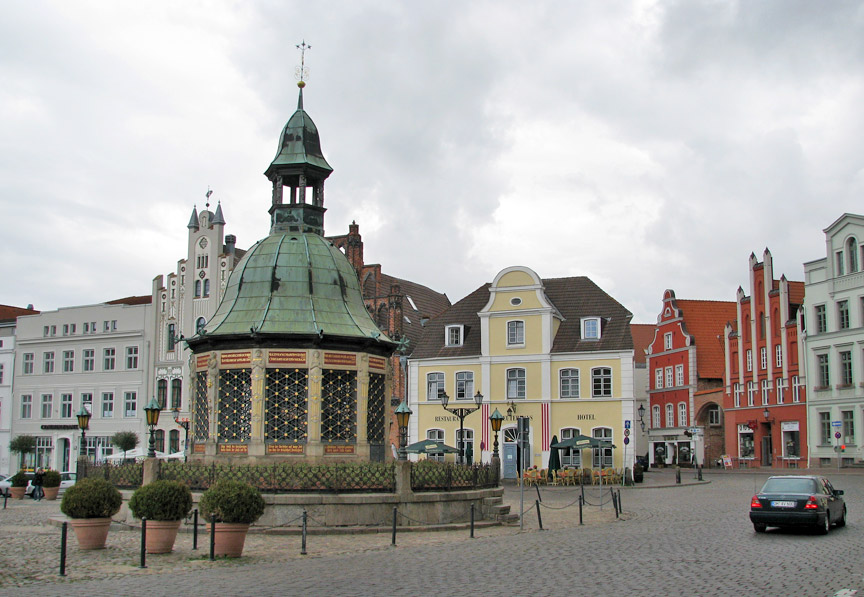
market place
The centre of the old town is the huge Market Place, the largest in Germany (10,000 square metres), surrounded by elegant buildings with styles ranging from 14th-century North German Gothic to 19th-century Romanesque revival. The square's focal point is the Wasserkunst, an elaborate wrought-iron fountain imported from Holland in 1602. The northern side of the square is occupied by the Town Hall, built in neoclassical style in 1817–1819. Another notable building in the square is an ancient Gothic warehouse called Alter Schwede (The Old Swede), erected around 1380.
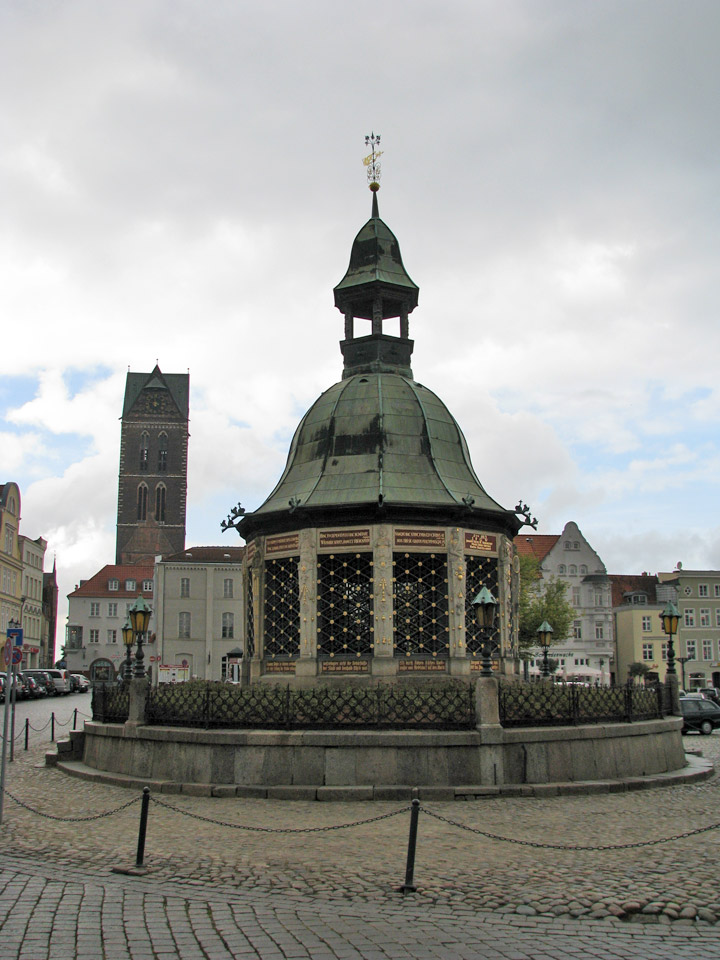
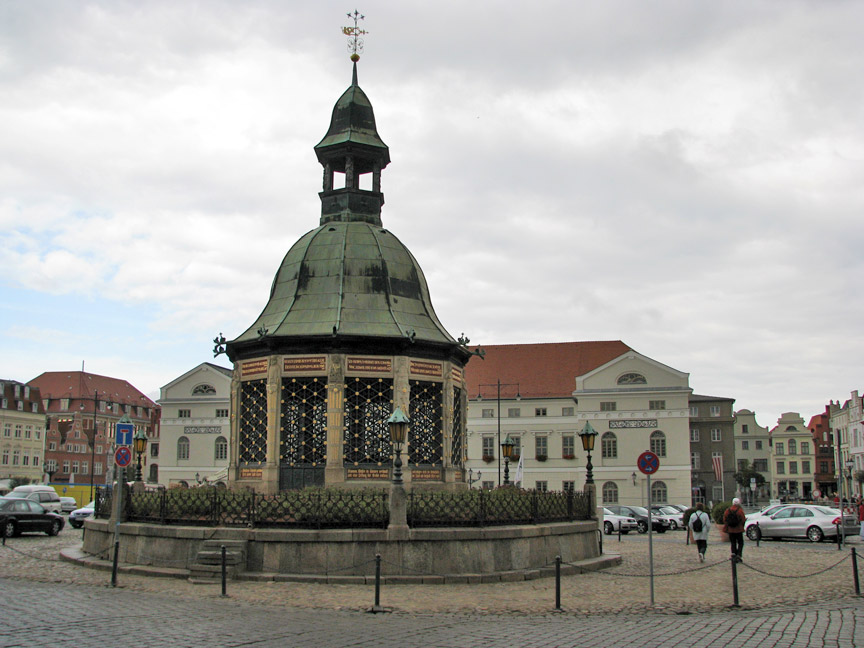

Town Hallll
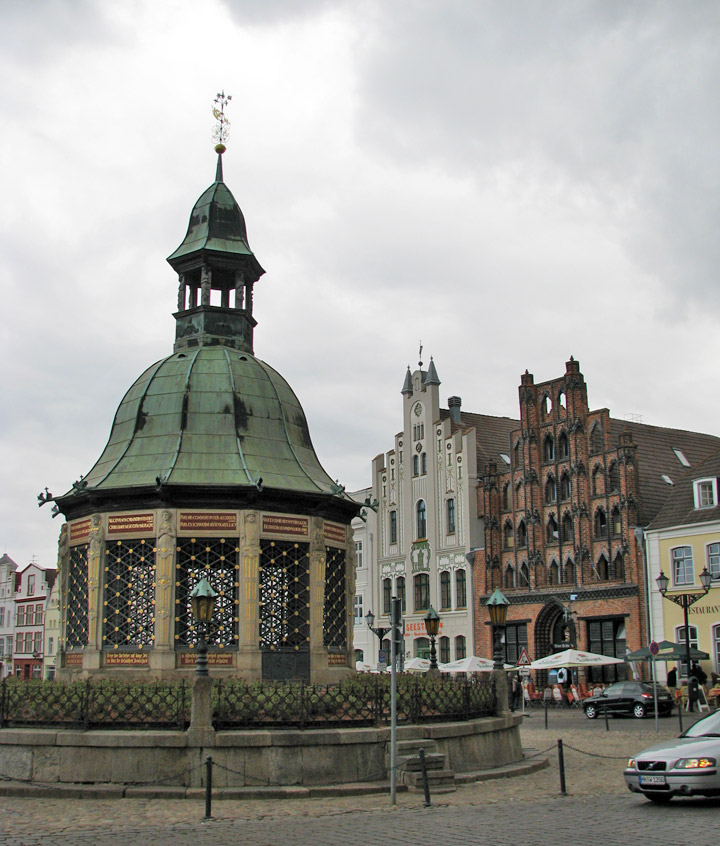

Alter Schwede (The Old Swede)

Saint Mary's church
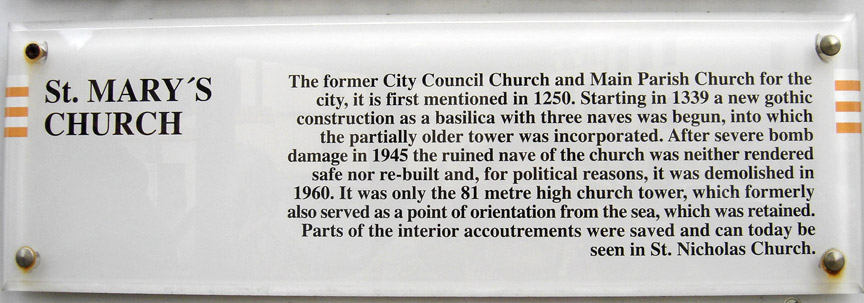

the unrebuilt sanctuary of the church
The 80 m high tower church of St Mary (Marienkirche) is the only remainder of the original Brick Gothic edifice, built in the first half of the 13th century. It suffered heavy damage in World War II, and was deliberately destroyed in 1960 under the East German Communist government.
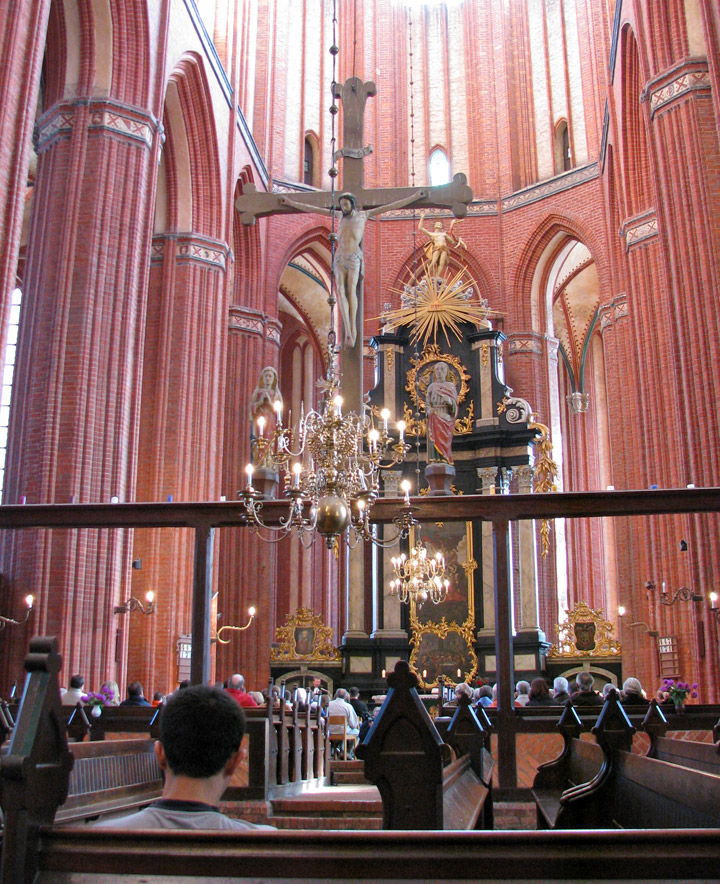
church of St Nicholas
The church of St Nicholas (Nikolaikirche), built in 1381–1460, with very lofty vaulting, together with the Marienkirche, are regarded as good examples of the influence exercised in these northern provinces by the large church of St Mary in Lübeck.

church of St George
The elegant cruciform church of St George (St Georgen-Kirche) dates from the first half of the 13th century. It was destroyed in World War II and rebuilt in 1990.
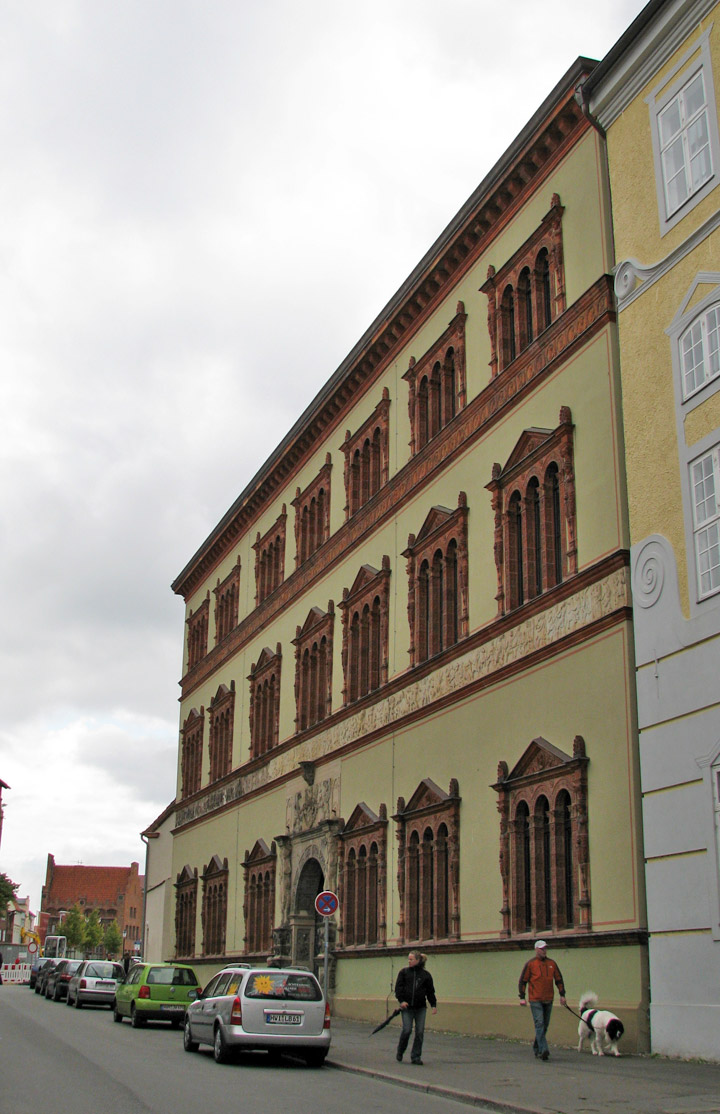
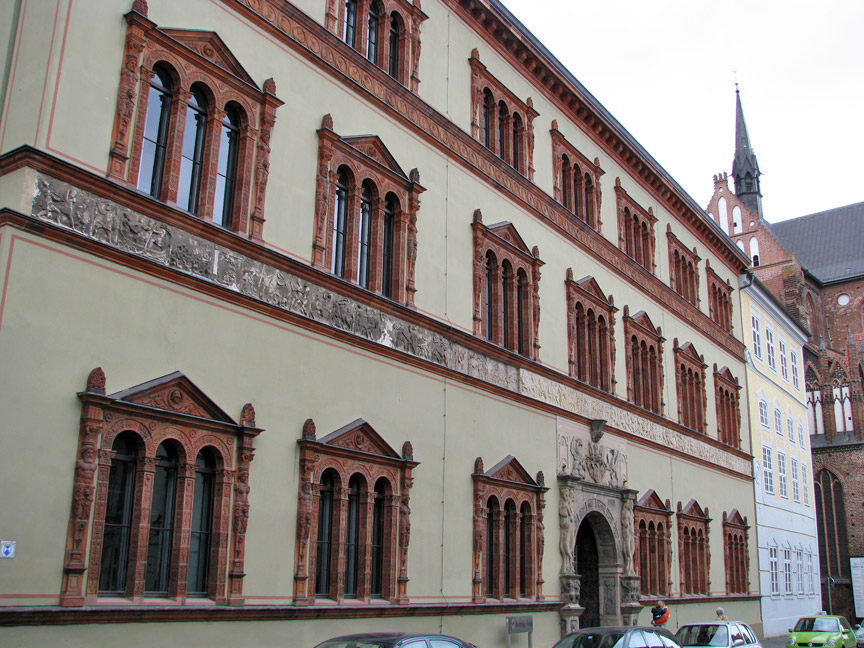
courthouse
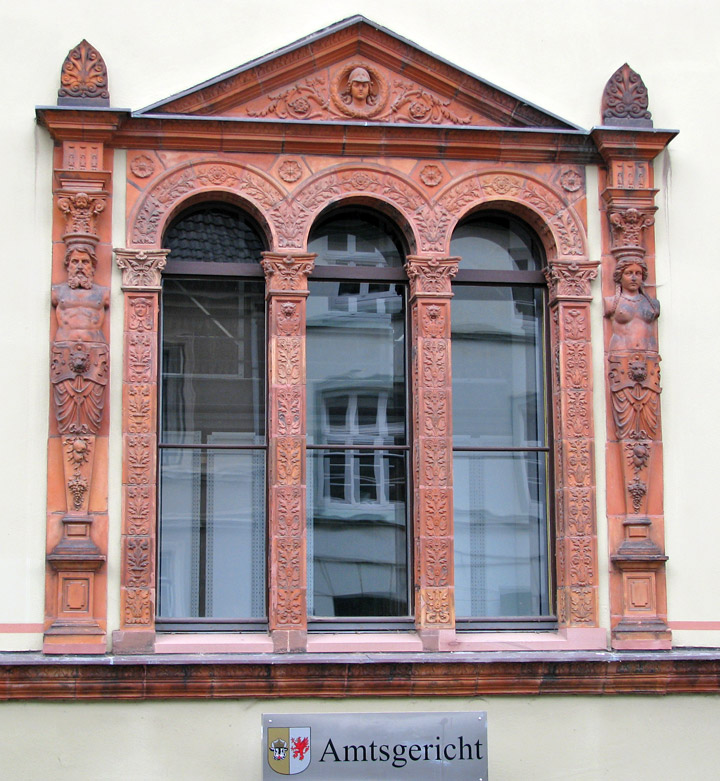

The Fürstenhof, at one time a ducal residence, and later occupied by the
municipal authorities, is a richly decorated specimen of the Italian early
Renaissance style. Built in 1552–1565, it was restored in 1877–1879. The "Old
School", dating from about 1300, has been restored, and used as a museum. The
town hall, rebuilt in 1829, contains a collection of pictures.
Text from Wikipedia
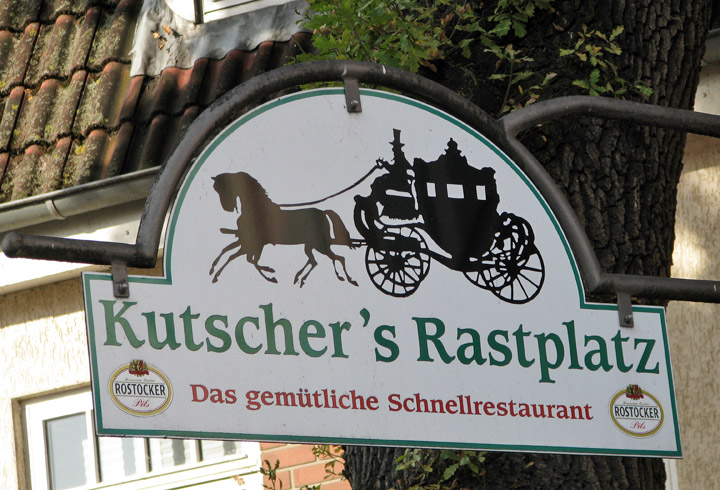
fast food at the Coach Stop
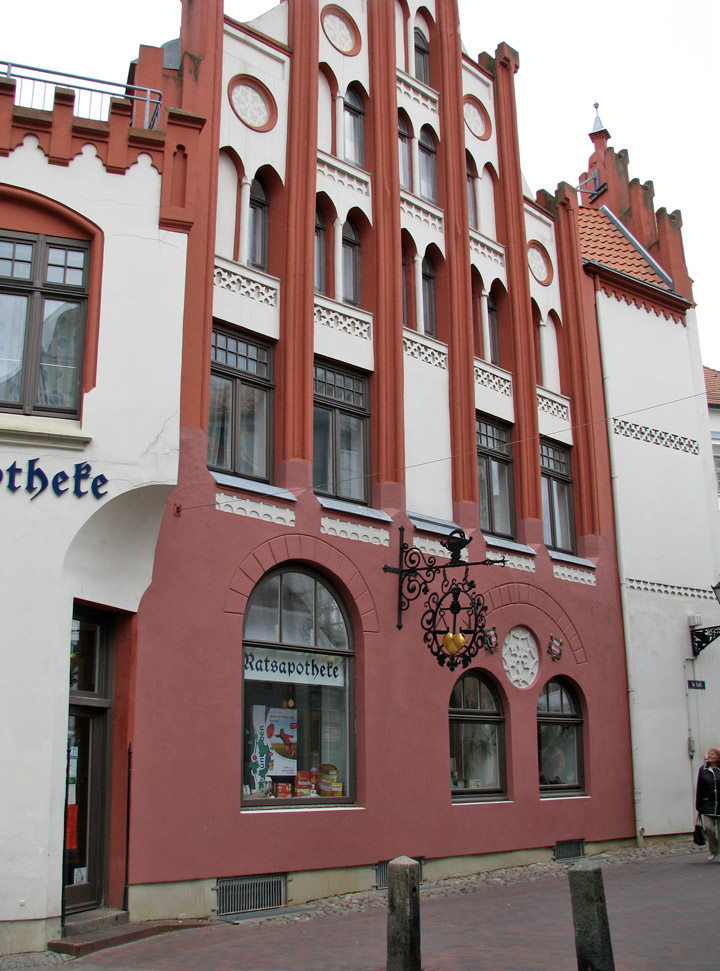
drug store

pastry shop
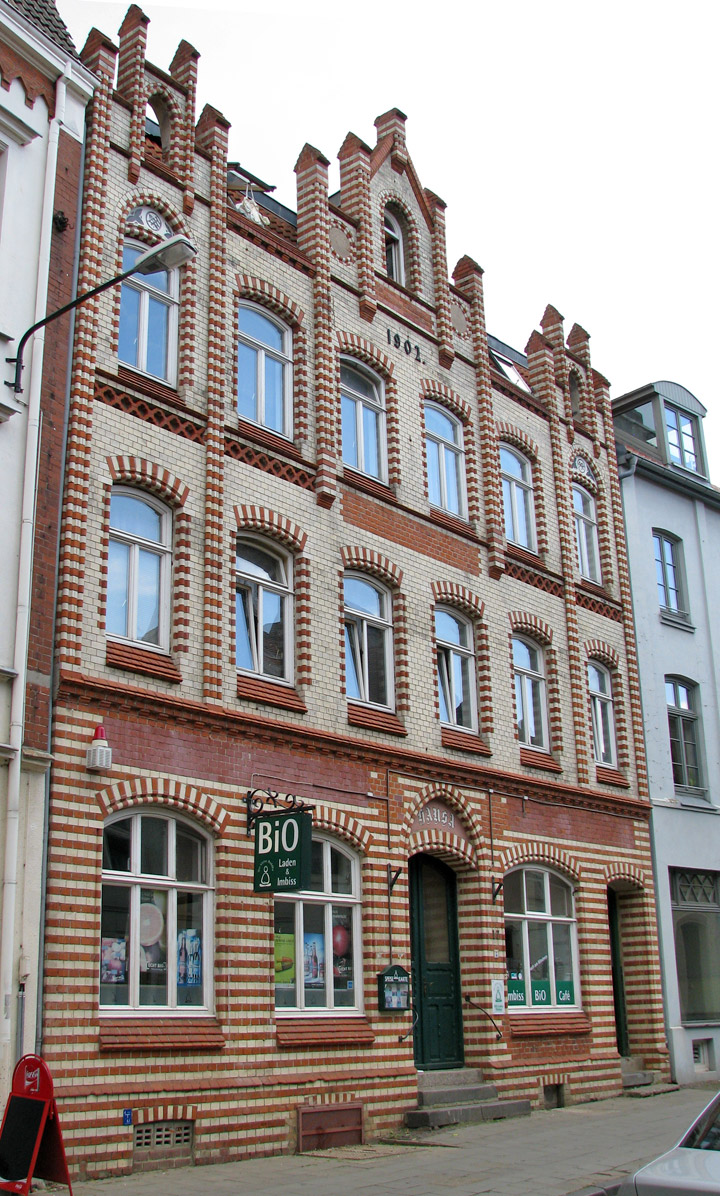
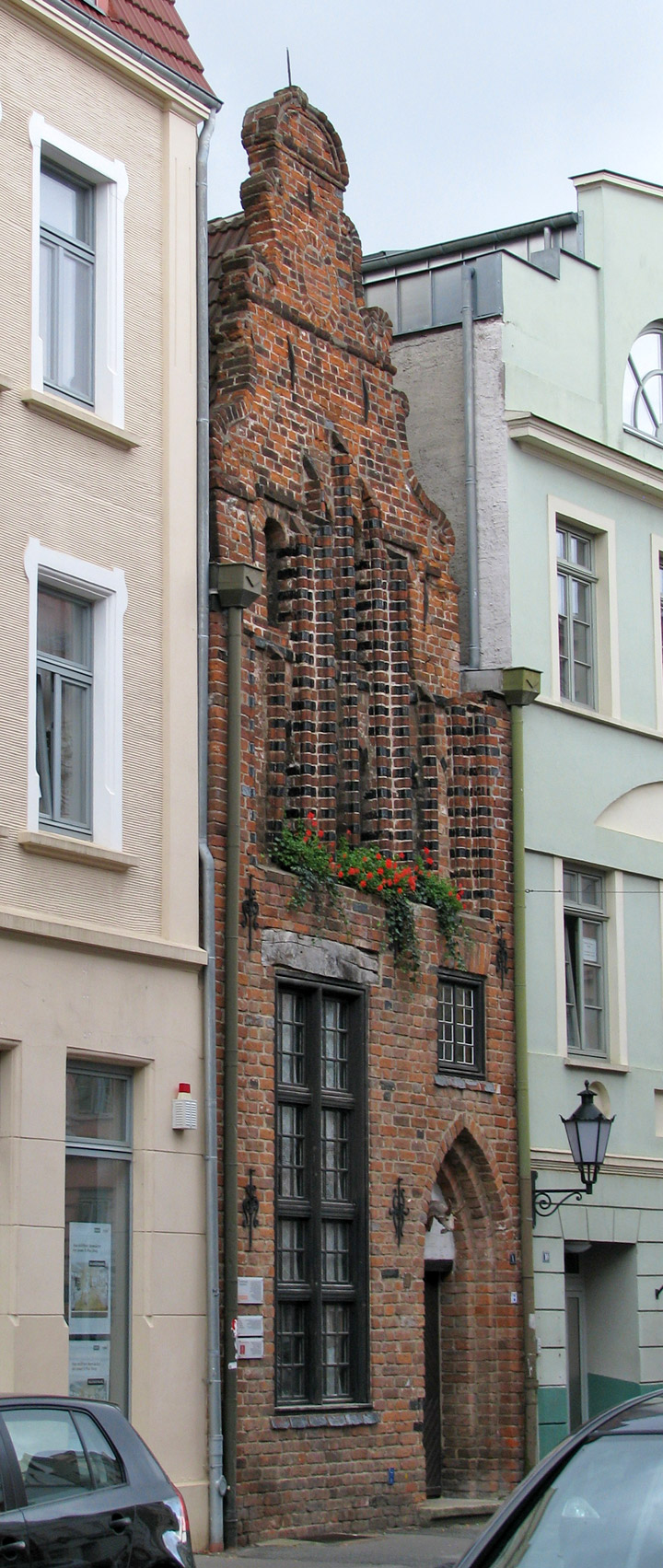
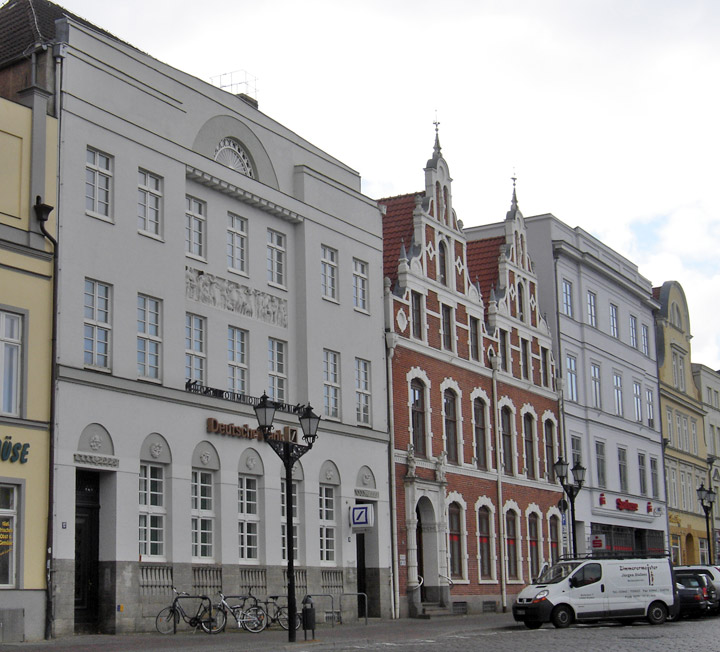

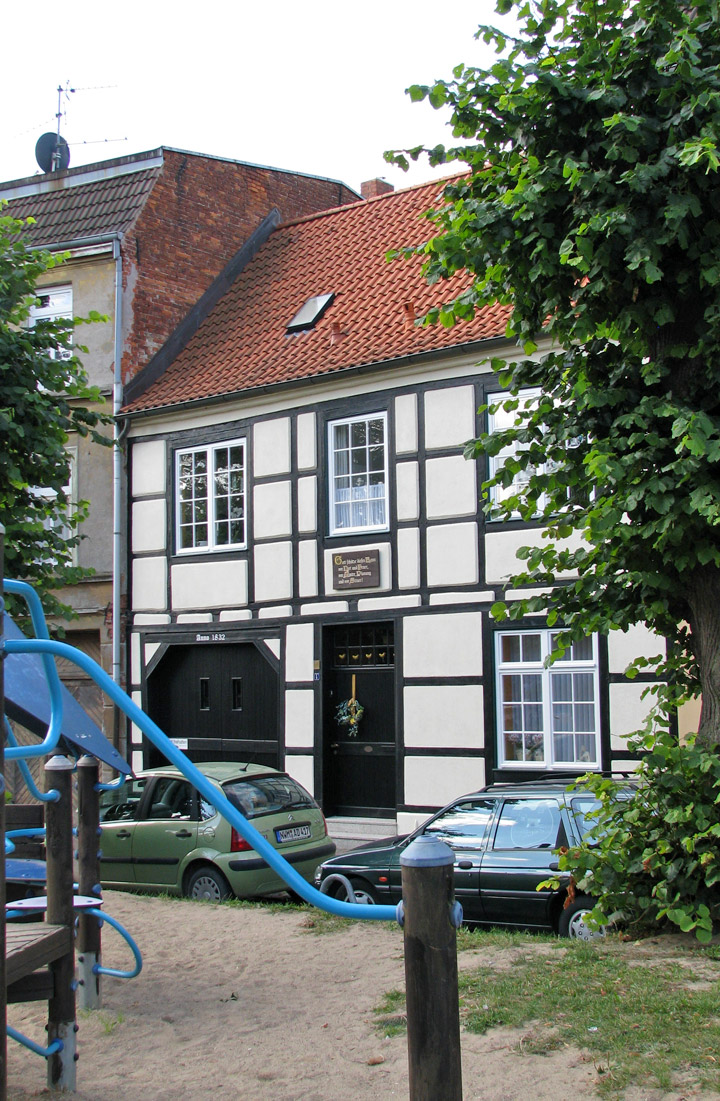
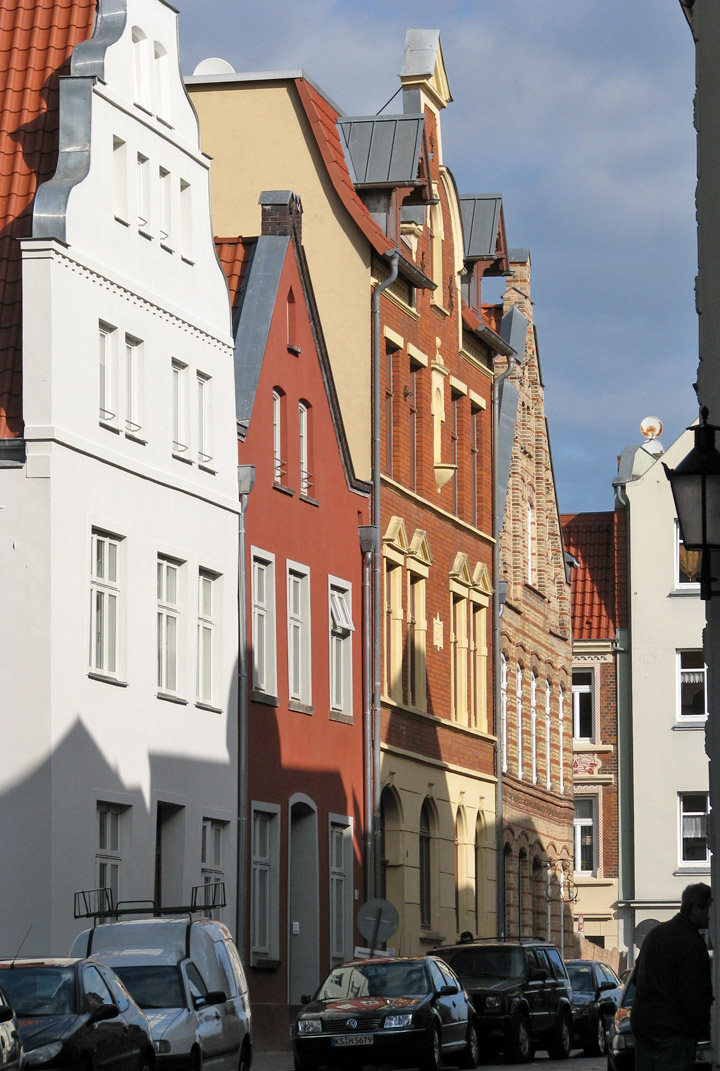
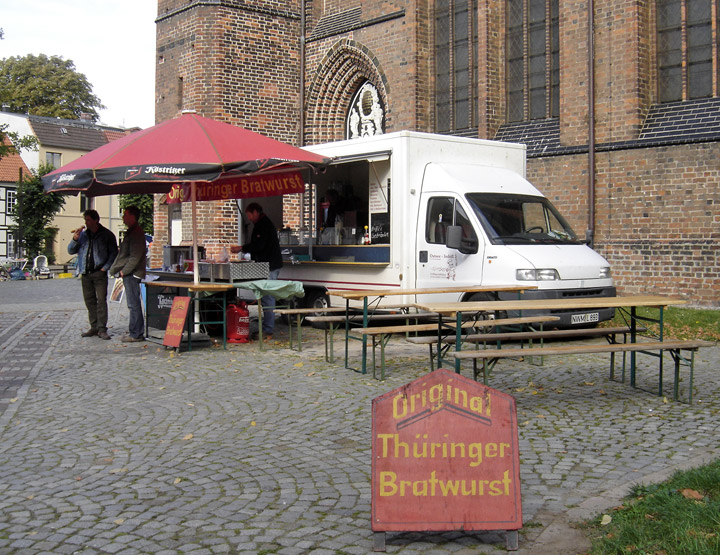
sausages from the van